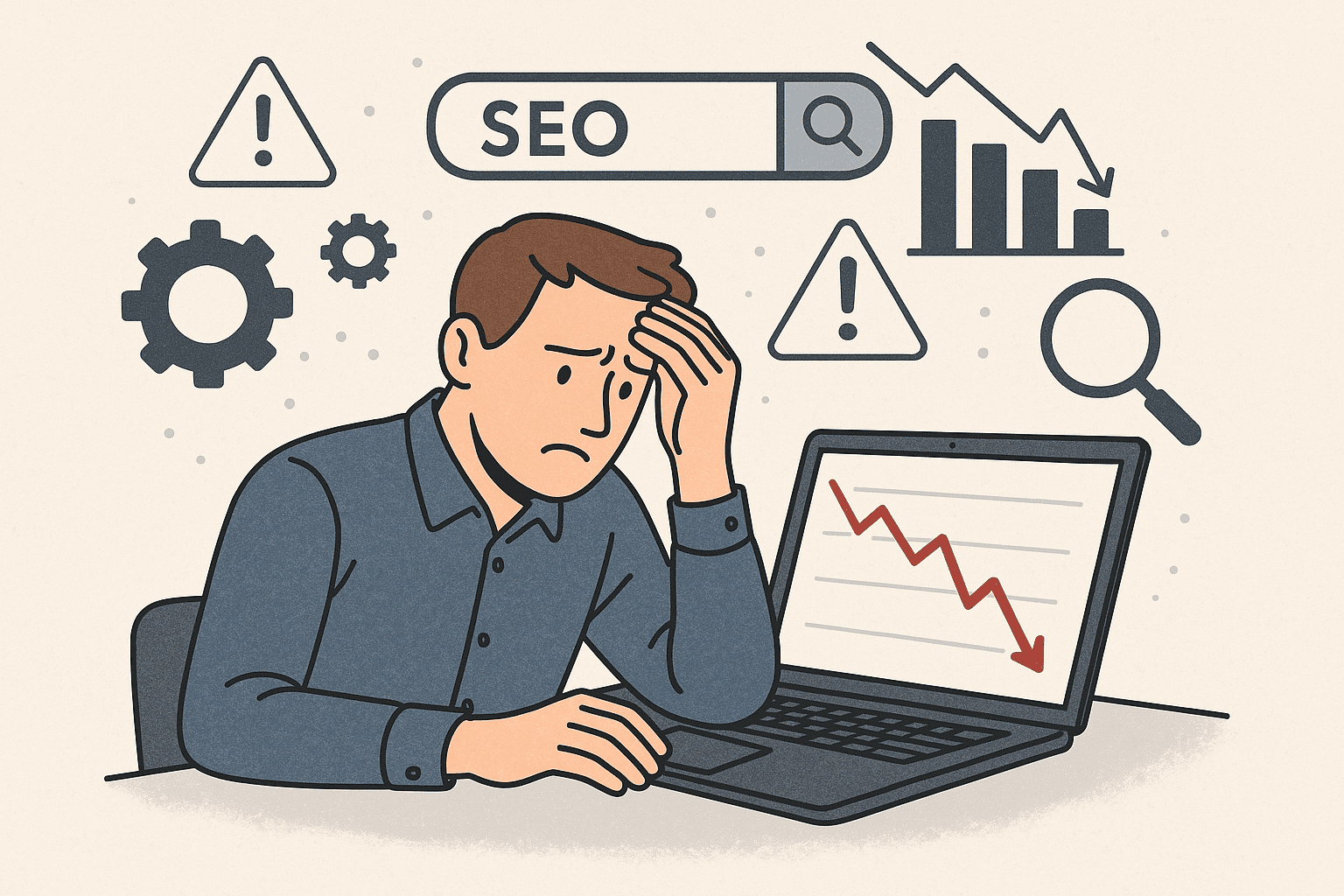Top 5 SEO Mistakes to Avoid for Better Google Rankings
The Top 5 SEO Blunders and How to Resolve Them
An effective digital business creates and markets its content in accordance with Search Engine Optimization (SEO) strategies. That’s why SEO is critical for getting and ranking content in search engines and Google. Even marketers or content owners are not exempt from succumbing to SEO traps that sabotage their growth. From wasting resources on ineffective tactics to competing against themselves in the market, you have to do many things to overcome this situation.
1. Ignoring Keyword Example
The Mistake
Ignoring the user’s search purpose can significantly affect their engagement with your site. Including keywords solely for the intent of driving volumes often renders a futile circulation of site visits.
Why It’s A Problem
Not understanding one’s target audience can lead to unnecessary traffic generation. Understanding why a user is “googling” something is critical to attracting the right traffic and conversation. Someone searching for “best running shoes” will most likely buy; meanwhile, “how to choose running shoes” is a more passive, inquisitive activity.
The Fix
Conduct and employ tools to study both long-tail and short-tail keywords, including Google Search, SEMrush, or Ahrefs, to analyze SERP intent.
Match user expectations with content so it will enhance satisfaction.
2. Leaving Technical Factors of the Site Unattended
The Mistake
Broken links, missing XML sitemaps and slow-loading pages are all back-end elements that every site owner needs to work on.
Why It’s a Problem
Technical glitches that prevent search engines from crawling and indexing your site properly result in reduced visibility and poor user experience.
The Fix
Regular audits should be conducted with Google Search Console, Screaming Frog, or SEMrush.
Use lazy loading, compressed images, and CDNs to improve page speed.
Confirm that the site is mobile-friendly and uses a well-defined URL structure.
3. Not Optimizing for Mobile
The Mistake
Ceasing all work on a website that accommodates desktop users poses a serious issue in 2025.
Why It’s a Problem
More than 60% of traffic is from mobile devices. In addition, Google uses mobile-first indexing, meaning your site’s mobile version becomes the default version for rankings.
The Fix
Employ responsive web design that conforms to all screen sizes.
Raise mobile page speed by reducing unnecessary JavaScript and other heavy elements.
Soften surface elements to allow easy and quick interaction with CTA buttons.
4. Poor Quality or Thin Content
The Mistake
Creating under-researched, poorly crafted, and unloved pieces of content targeted toward keywords for the sake of publishing.
Why It’s a Problem
Google penalizes content that lacks depth. Your page might get indexed, but if it doesn’t solve a problem, it won’t rank.
The Fix
Emphasize quality rather than the quantity of published pieces.
Include original visuals, research, stats, or quotes from experts.
Your essay should be 800-1000 words long based on your desired depth.
5. Skipping Meta Tags & On-Page SEO
The Mistake
Not utilizing the meta title and description, meta header tags, and alt tags for images.
Why It Is A Problem
Search engines and users use meta tag descriptions to understand your content. When tags are not present or are copied, they create confusion for Google and reduce CTR.
The Solution
Each page must include unique meta titles and descriptions.
Structure content using header tags, i.e., H1-H3.
Images must have alt text descriptions for image accessibility and image SEO.
Final Thoughts
Not falling for these SEO traps will raise your ranking while also creating a seamless user experience and boosting conversions. SEO is a never-ending game, and adopting a new focus strategy now and then is mandatory to win.
Insider Tip: Make SEO audits a monthly task, then monitor performance metrics frequently with Google Analytics and Search Console.






